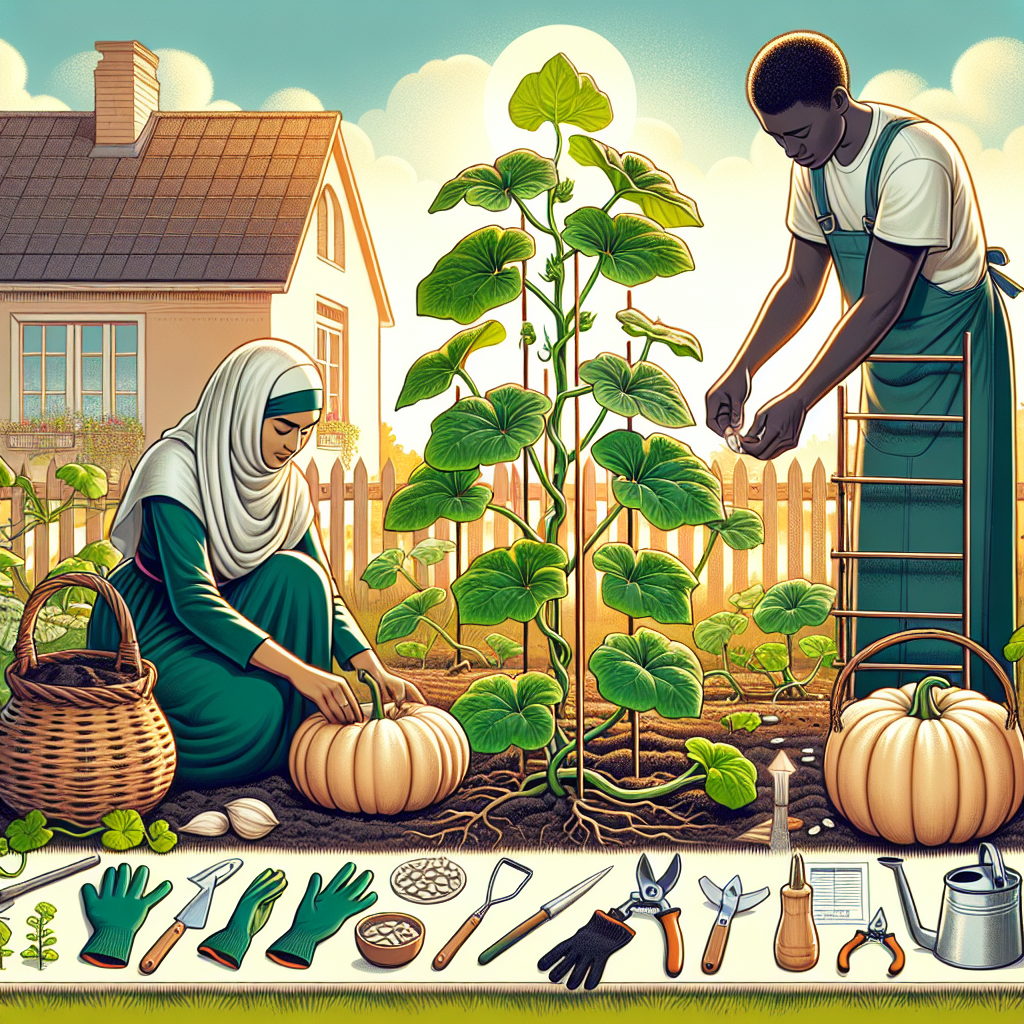Unlocking the Secrets to Successful Pumpkin Growth at Home
Pumpkins are not only a staple of autumn and Halloween decorations, but they also make delicious pies and soups. Growing your own pumpkins at home can be a rewarding experience, but it requires special care and attention. In this article, we will explore the secrets to successful pumpkin growth at home.
1. Choosing the Right Variety
There are various pumpkin varieties available, each with its own characteristics and requirements. Determining the right variety for your climate is crucial. If you live in a region with a shorter growing season, choose smaller varieties like Sugar Pie or Baby Bear. For those in warmer climates with longer growing seasons, larger varieties like Atlantic Giant or Dill’s Atlantic Giant may be suitable.
2. Preparing the Soil
Pumpkins thrive in well-drained soil that is rich in organic matter. Start by clearing any weeds or debris from the area where you plan to plant your pumpkins. Incorporate plenty of compost or well-rotted manure into the soil to improve its fertility and structure.
3. Planting Seeds or Seedlings
Depending on your preference and time available, pumpkin seeds can be directly sown into the ground or started indoors as seedlings before transplanting them outdoors. The ideal time for planting depends on your location, but generally, pumpkins should be sown after the last frost has passed when soil temperatures are around 65°F (18°C).
If starting seeds indoors, use peat pots or biodegradable seedling trays filled with seed-starting mix. Plant one seed per pot about an inch deep and water gently. Keep the seedlings warm until they are ready for transplantation.
4. Providing Adequate Sunlight
Pumpkins love sunlight! They require at least 6-8 hours of direct sunlight daily to grow properly. Choose an area that receives full sun exposure throughout the day.

5. Proper Watering Techniques
Pumpkins need consistent moisture to grow, especially during flowering and fruiting stages. Water deeply once or twice a week, allowing the soil to dry out slightly between waterings. Avoid overhead watering, as wet foliage can encourage diseases. Instead, aim to water directly at the base of the plants.
6. Implementing Support Structures
As pumpkins grow, they can become heavy and may require support to prevent them from touching the ground or getting damaged. You can use trellises, fences, or even create a mesh sling for larger pumpkins to rest on as they mature.
7. Regular Fertilization
Pumpkins are heavy feeders and benefit from regular fertilization. Before planting, incorporate balanced organic fertilizer into the soil. As the plants start growing, side-dress them with compost or a slow-release organic fertilizer every few weeks to provide nutrients throughout the growing season.
8. Pest and Disease Control
Pumpkins can be susceptible to various pests and diseases such as powdery mildew, squash bugs, or cucumber beetles. To prevent infestations, practice crop rotation and remove any infected plants immediately. You may also consider using organic insecticides or pest-repelling companion plants like marigolds or nasturtiums.
9. Proper Harvesting Techniques
Knowing when to harvest your pumpkins is essential to ensure optimal taste and quality. Mature pumpkins have a hard skin that does not dent when pressed with your fingernail and have reached their full coloration. Use sharp pruning shears or a knife to cut them off the vine carefully, leaving a short stem intact.
10. Storage Tips
If you’re not ready to use your harvested pumpkins right away, proper storage is crucial for preserving their freshness and longevity. Keep them in cool (50-55°F / 10-13°C), dry storage with good ventilation for up to three months.
In conclusion, growing pumpkins at home can be a delightful and rewarding experience. By following these secrets to successful pumpkin growth, you can enjoy a bountiful harvest and have the satisfaction of knowing that you unlocked the secrets to growing a magnificent pumpkin patch right in your backyard.













